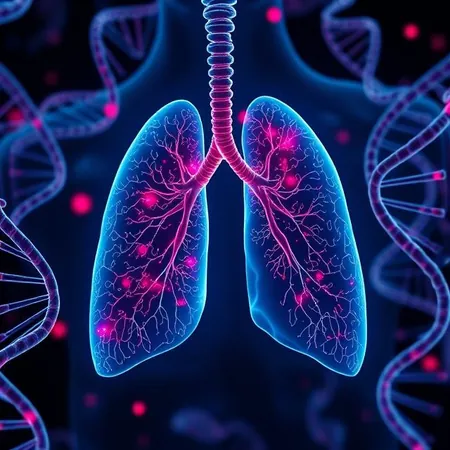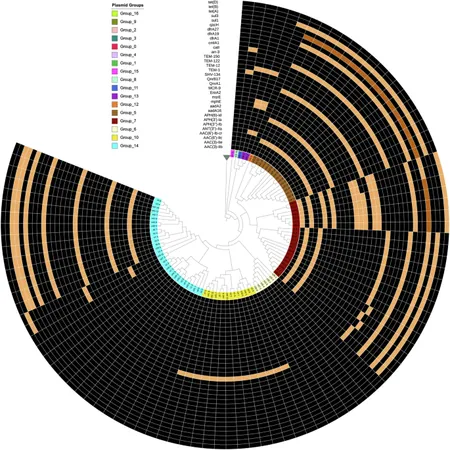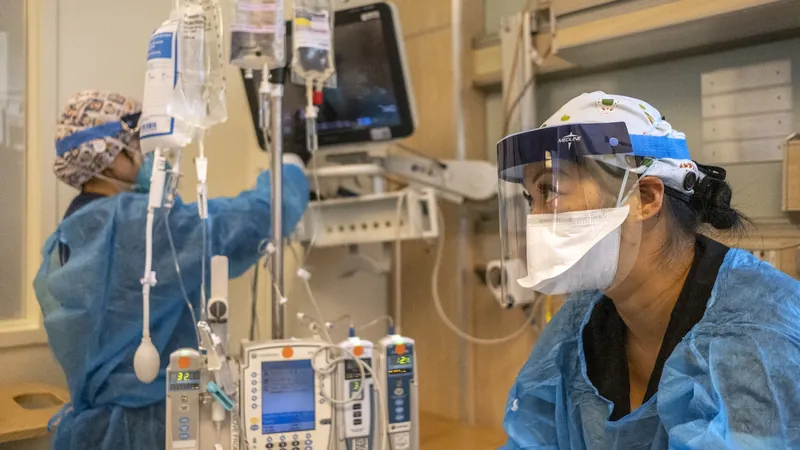
Unlocking the Future of SCLC Treatment: How ctDNA Testing Could Revolutionize Immunotherapy
2025-09-09
Author: Mei
A Game-Changer for Limited-Stage Small Cell Lung Cancer
New research presented at the prestigious World Conference on Lung Cancer 2025 reveals a breakthrough in treating limited-stage small cell lung cancer (SCLC). By measuring circulating tumor DNA (ctDNA) after initial chemotherapy, doctors may soon pinpoint which patients are best suited for consolidation immunotherapy.
Pioneering the Path to Precision Immunotherapy
Dr. Nan Bi from the Chinese Academy of Medical Sciences emphasized the impact of this study, stating, "This is the first research to demonstrate that early ctDNA detection post-chemotherapy can effectively identify patients who will reap the most benefits from consolidation immunotherapy. This marks a significant step toward personalized treatment in limited-stage SCLC."
Analyzing Patient Data: A Closer Look at the Findings
The study evaluated 490 plasma ctDNA samples from 144 patients, primarily male (77%), all grappling with limited-stage SCLC. Among them, 100 underwent two rounds of induction chemotherapy followed by chemoradiotherapy, while 44 received additional consolidation immunotherapy with serplulimab.
The results were striking: patients with positive ctDNA post-induction chemotherapy faced a staggering 2.46 times higher risk of disease progression or death compared to those with negative ctDNA. The median progression-free survival (PFS) was drastically different, too—11.4 months for those with positive ctDNA versus 49.4 months for the negative group.
Immunotherapy Makes a Difference: Who Benefits?
When focusing on the type of treatment received, the research revealed that ctDNA status could effectively identify which patients might benefit from consolidation immunotherapy. Those with positive ctDNA after induction who also received consolidation therapy boasted a remarkable 71% lower risk of disease progression or death.
In terms of overall survival (OS), ctDNA-positive patients who underwent consolidation therapy had a staggering 95% reduced risk of death, with median OS rates not yet reached for those receiving the therapy.
The Prognostic Power of Combining ctDNA with Tumor Response
Dr. Bi showcased how fusing ctDNA status with radiological tumor response can refine patient prognoses. By developing a unique three-tier prognostic strategy, the research distinguishes between patients who will benefit from consolidation immunotherapy and those who will not.
For instance, high-risk patients—those with positive ctDNA and less than 60% tumor shrinkage post-induction—experienced an impressive 71% reduction in disease progression risk when treated with consolidation immunotherapy.
Charting the Future of SCLC Treatment
The implications of this study are profound. Dr. Bi asserts that integrating ctDNA-based stratification in future trials is essential for enhancing treatment approaches in limited-stage SCLC. However, she cautions that the current costs associated with ctDNA testing may pose challenges for widespread implementation.
As the medical community moves forward, a larger independent study on ctDNA monitoring is needed to further validate these findings and ensure that the best treatment options are available to those who need them most.




 Brasil (PT)
Brasil (PT)
 Canada (EN)
Canada (EN)
 Chile (ES)
Chile (ES)
 Česko (CS)
Česko (CS)
 대한민국 (KO)
대한민국 (KO)
 España (ES)
España (ES)
 France (FR)
France (FR)
 Hong Kong (EN)
Hong Kong (EN)
 Italia (IT)
Italia (IT)
 日本 (JA)
日本 (JA)
 Magyarország (HU)
Magyarország (HU)
 Norge (NO)
Norge (NO)
 Polska (PL)
Polska (PL)
 Schweiz (DE)
Schweiz (DE)
 Singapore (EN)
Singapore (EN)
 Sverige (SV)
Sverige (SV)
 Suomi (FI)
Suomi (FI)
 Türkiye (TR)
Türkiye (TR)
 الإمارات العربية المتحدة (AR)
الإمارات العربية المتحدة (AR)